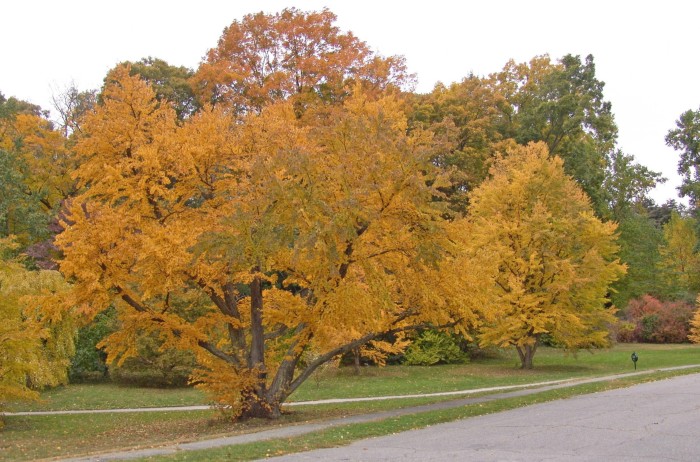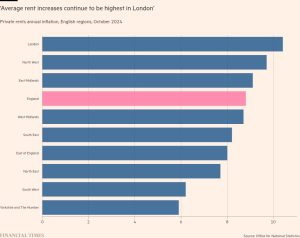Why are autumn colours more vibrant in the US than in Britain?

Theologically, there is supposed to have been only one Fall. Here is a tale of two. In Britain, autumn’s yearly fall of leaves and floral beauty has been dire. In early October frost ruined the dahlias and many of the annual flowers. Meanwhile the sky has rained and scowled. In the US, falls are famously beautiful. So I have escaped this year’s British autumn to try a transatlantic one.
It has been a wise short bolt. For a few days I have been basking under a blue sky in a sunny fall of yellow, red and orange at the Arnold Arboretum of Harvard, the east coast’s supreme collection of hardy trees, built up since 1872. Last year it attracted more than 500,000 visitors. Entry is free. The Arnold’s arboricultural fall has yet to run its course. It culminates next month when the best of its many oaks change colour and the ginkgo trees go out in a burst of yellow. The arboretum is open to visitors every day of the year, entirely funded by philanthropy, including donations from many admirers who live outside its home city, Boston.
Last year I revelled at its leafy beauty in high summer as I coasted in a golf cart through its many acres. Whatever the season, the ground plan is the work of a genius, Frederick Law Olmsted, best known for his design for New York’s Central Park. As one green vista opened off another, his sinuous command of space kept me guessing as to what would be growing around the next curve. It also made me wonder what the arboretum’s huge range of global trees would look like in a multicoloured fall. I now know the answer: stunning. Boston blazes while Britain drips.

In my garden I have a few remaining hopes of colour, the last being my avenues of Chanticleer, an ornamental pear tree whose glossy leaves turn ruby red in late November. In the Arnold Arboretum I have been spoiled for colourful choice. With the director, William Friedman, and other heads of staff, I checked out the falling leaves of the cercidiphyllums, the Japanese Katsura trees, to see if they were scented of strawberries from the sugars they contain. So far they were not.
With the experts’ guidance I noted the arboretum’s huge Parrotia persica, an ironwood tree that resists drought, and colours to a good orange-red in Britain. I learnt that a parrotia from China, one called subaequalis, is an even better choice now for smaller gardens, as it is just as tough but has a neater shape and prettier leaves that turn a dark burgundy in autumn. Watch for it as it becomes more widely available in nurseries.
I also admired the arboretum’s towering silver maple, Acer saccharinum, which made me wonder why I planted two in Oxford, expecting them to top out at a height of only 40ft. They become half as high again after 60 years. Fast-growing silver maples turn yellow, but a major distinction, I began to realise, between a fall in Europe and one on America’s east coast is the latter’s higher proportion of deciduous trees, whose leaves turn red before they drop.
Scientists estimate that only 20 per cent of Europe’s deciduous trees turn red, whereas the proportion here is as high as 49 per cent. On entering the Arnold Arboretum I was confronted with a spectacular example, a red maple tree from the US that has a special link to the garden. The basic red maple is well known in British parks and big gardens, but the Arnold’s finest is Acer rubrum Schlesingeri. The arboretum’s first director, the celebrated Charles Sargent, selected it after seeing one growing in his neighbour Barthold Schlesinger’s private garden. He named it after him and introduced it to the arboretum in 1888.

In Britain, nurseries very seldom have stock. Schlesingeri prefers a damp acidic soil, at least in Britain. Its distinctive feature is the earliness of its autumn colour: it begins to turn dark red in September. Then it holds this tone for up to six weeks. The Arnold arboretum still has its original tree, now over 60ft high, but it is declining with old age. Michael Dosmann, encyclopedic keeper of the living collections, assured me that cuttings have been rooted and are growing on as replacements.
Why is eastern America’s fall more red than Britain’s? As Friedman is Harvard’s professor of organismic and evolutionary biology, he brought me up to date on this much-debated question. Two main views have competed since 2001. One is evolutionary, the other economic, at least in terms of a tree’s resources. One regards the red in leaves as a warning sign, a deterrent to unwanted insects. The other regards red as a sunblock.
The deterrent theory was best expressed in 2001 by Bill Hamilton, a world-famous evolutionary biologist. As he was a professor in my Oxford college for many years, we used to talk over communal lunches almost every week while overlooking its trees and garden. I knew he puzzled why humans’ method of conception was such a complex act as sexual intercourse: he regarded it as the way, originally, to outmanoeuvre parasites. I also knew he explained gigantism in plants by similar reasoning: he told me that the need to evade parasites had caused tobacco plants on the island of St Helena to grow more than 20ft tall. In Hamilton’s view, the red leaves are a signal to insects and aphids that lay their eggs in autumn: keep off, they signify, and deposit your eggs elsewhere.

I find this theory unpersuasive. Egg-laying insects do not buzz off from all red-leaved trees, no more than I do, an admiring Brit on a break from dreary greyness. In 2019, a paper by Susanne Renner in Munich and Constantin Zohner in Zurich summarised and strengthened a different explanation, that the red in autumn leaves blocks strong sunlight and dissipates energy absorbed from it, allowing ageing leaves to have more time in which to “resorb nutrients” before they detach themselves and drop.
They linked this argument convincingly to aspects of the autumn climates in the eastern US and Europe, the higher temperatures of the US’s sunny autumn days, its longer and earlier autumn season and its lower contrasting temperatures at night. The red in its fall is a sunblock, protecting the leaf’s cells.
Top botanic arboreta and their records are databases for scientists, helping them to understand what we superficially see. Their spaces are also havens for globally endangered species, raised from collected seed and cuttings in safety.
I do not imagine leaves colouring and falling from trees in prelapsarian Eden. I imagine God’s garden as tediously seasonless and Adam and Eve as never needing a winter blanket. Seasonality came in with the Fall. In Boston’s living Eden, one result is that a burst of red ends the leafy year of deciduous trees. In Britain reds are rarer, not because we have been even more wicked, but because our autumns are shorter, less sunny and less polarised in temperatures by day and night.
Find out about our latest stories first — follow @ft_houseandhome on Instagram
#autumn #colours #vibrant #Britain





